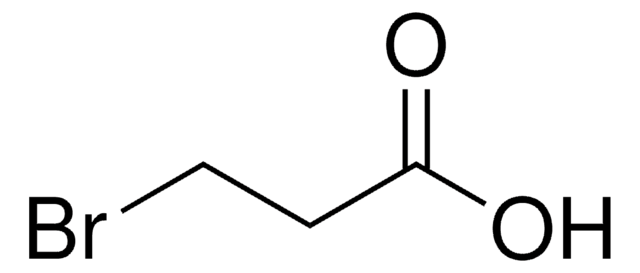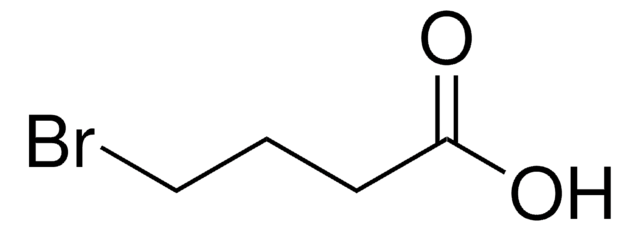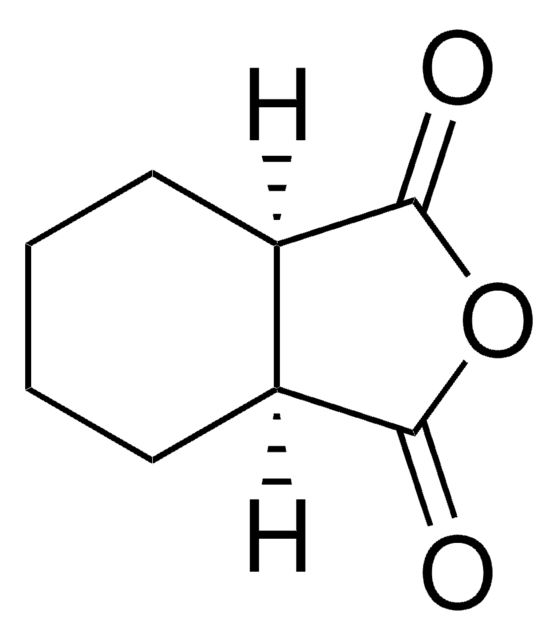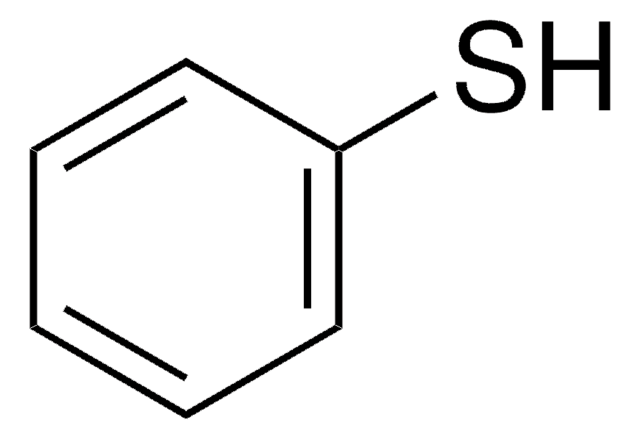132691
3-Chlor-propionsäure
98%
About This Item
Empfohlene Produkte
Qualitätsniveau
Assay
98%
Form
solid
bp
203-205 °C (lit.)
mp (Schmelzpunkt)
35-40 °C (lit.)
Löslichkeit
H2O: soluble 50 mg/mL, clear, colorless
SMILES String
OC(=O)CCCl
InChI
1S/C3H5ClO2/c4-2-1-3(5)6/h1-2H2,(H,5,6)
InChIKey
QEYMMOKECZBKAC-UHFFFAOYSA-N
Suchen Sie nach ähnlichen Produkten? Aufrufen Leitfaden zum Produktvergleich
Allgemeine Beschreibung
Anwendung
Signalwort
Danger
H-Sätze
Gefahreneinstufungen
Skin Corr. 1A
Lagerklassenschlüssel
8A - Combustible corrosive hazardous materials
WGK
WGK 1
Flammpunkt (°F)
230.0 °F - closed cup
Flammpunkt (°C)
110 °C - closed cup
Persönliche Schutzausrüstung
Eyeshields, Faceshields, Gloves, type P3 (EN 143) respirator cartridges
Analysenzertifikate (COA)
Suchen Sie nach Analysenzertifikate (COA), indem Sie die Lot-/Chargennummer des Produkts eingeben. Lot- und Chargennummern sind auf dem Produktetikett hinter den Wörtern ‘Lot’ oder ‘Batch’ (Lot oder Charge) zu finden.
Besitzen Sie dieses Produkt bereits?
In der Dokumentenbibliothek finden Sie die Dokumentation zu den Produkten, die Sie kürzlich erworben haben.
Unser Team von Wissenschaftlern verfügt über Erfahrung in allen Forschungsbereichen einschließlich Life Science, Materialwissenschaften, chemischer Synthese, Chromatographie, Analytik und vielen mehr..
Setzen Sie sich mit dem technischen Dienst in Verbindung.








